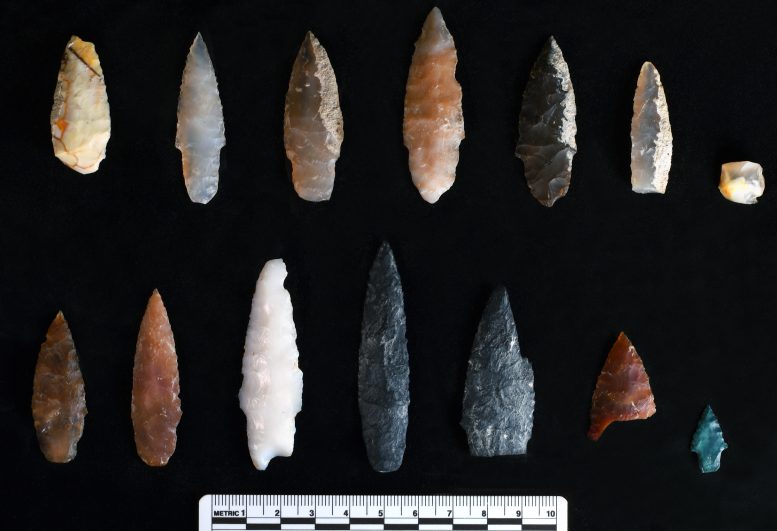
Stone projectile points discovered buried inside and outside of pit features at the Cooper’s Ferry site, Area B. Credit: Courtesy Loren Davis
Oregon State University archaeologists have made a historic discovery in Idaho by uncovering projectile points thousands of years older than any previously found in the Americas, shedding light on the history of early human crafting and usage of stone weapons.
The archaeologists discovered 13 full and fragmented projectile points, ranging from 0.5 to 2 inches and razor-sharp. The points, carbon-dated to approximately 15,700 years ago, predate the Clovis fluted points by 3,000 years found throughout North America and the previously found points at the Cooper’s Ferry site in Idaho by 2,300 years.
The findings were recently published in the journal Science Advances.
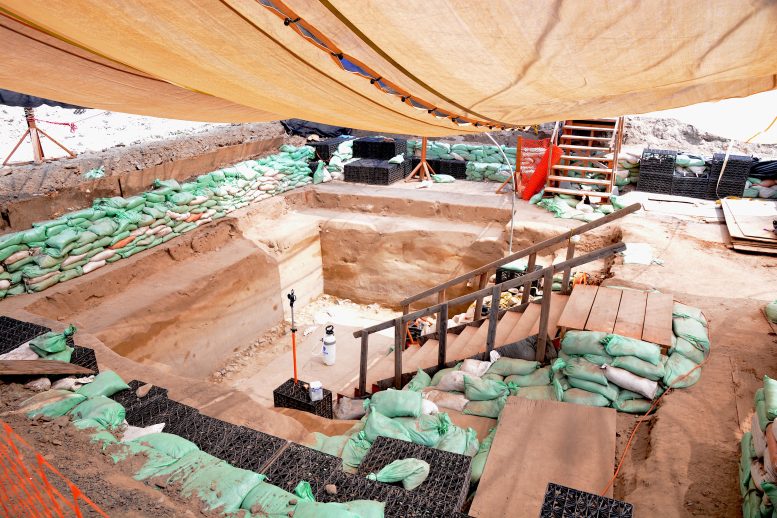
Overview of the Area B excavations at the Cooper’s Ferry site in 2017. Credit: Courtesy Loren Davis
“From a scientific point of view, these discoveries add very important details about what the archaeological record of the earliest peoples of the Americas looks like,” said Loren Davis, an anthropology professor at OSU and head of the group that found the points. “It’s one thing to say, ‘We think that people were here in the Americas 16,000 years ago;’ it’s another thing to measure it by finding well-made artifacts they left behind.”
Previously, Davis and other researchers working the Cooper’s Ferry site had found simple flakes and pieces of bone that indicated human presence about 16,000 years ago. But the discovery of projectile points reveals new insights into the way the first Americans expressed complex thoughts through technology at that time, Davis said.
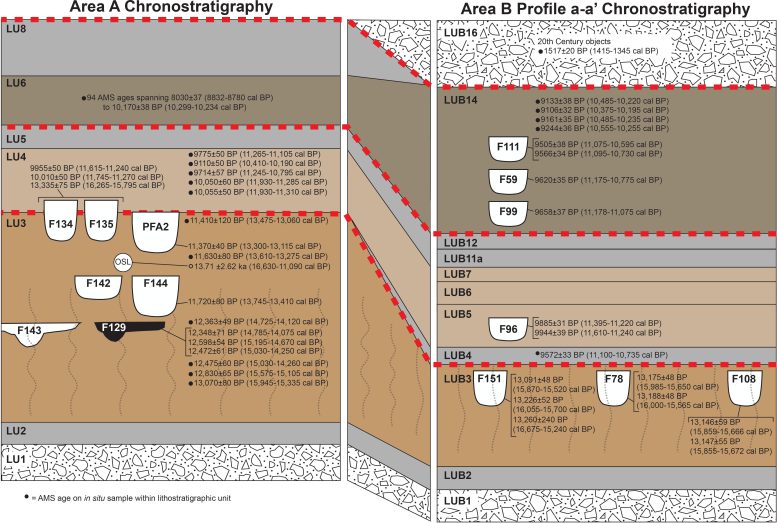
Stratigraphic model of the Cooper’s Ferry site, showing the distribution of cultural features (e.g., fire hearths, pits), radiocarbon and optically stimulated luminescence ages, sediment layers, and buried soils as exposed by excavations in Area A and Area B. Credit: Courtesy Loren Davis
The Salmon River site where the points were found is on traditional Nez Perce land, known to the tribe as the ancient village of Nipéhe. The land is currently held in public ownership by the federal Bureau of Land Management.
The points are revelatory not just in their age, but in their similarity to projectile points found in Hokkaido, Japan, dating to 16,000-20,000 years ago, Davis said. Their presence in Idaho adds more detail to the hypothesis that there are early genetic and cultural connections between the ice age peoples of Northeast Asia and North America.
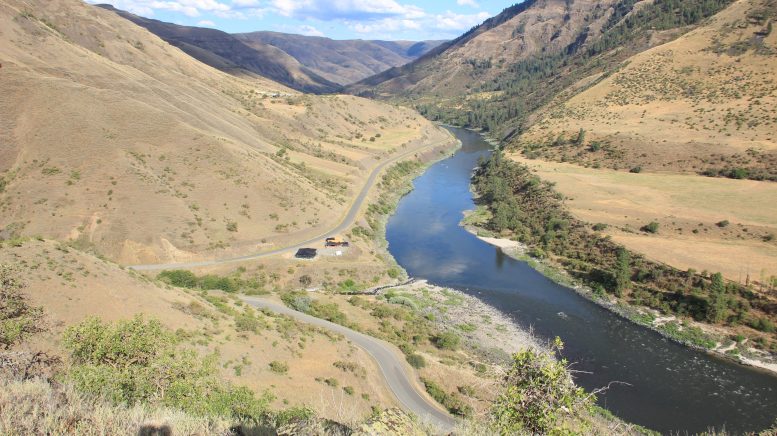
Overview of the Cooper’s Ferry site in the lower Salmon River canyon of western Idaho, USA. Credit: Courtesy Loren Davis
“The earliest peoples of North America possessed cultural knowledge that they used to survive and thrive over time. Some of this knowledge can be seen in the way people made stone tools, such as the projectile points found at the Cooper’s Ferry site,” Davis said. “By comparing these points with other sites of the same age and older, we can infer the spatial extents of social networks where this technological knowledge was shared between peoples.”
These slender projectile points are characterized by two distinct ends, one sharpened and one stemmed, as well as a symmetrical beveled shape if looked at head-on. They were likely attached to darts, rather than arrows or spears, and despite the small size, they were deadly weapons, Davis said.
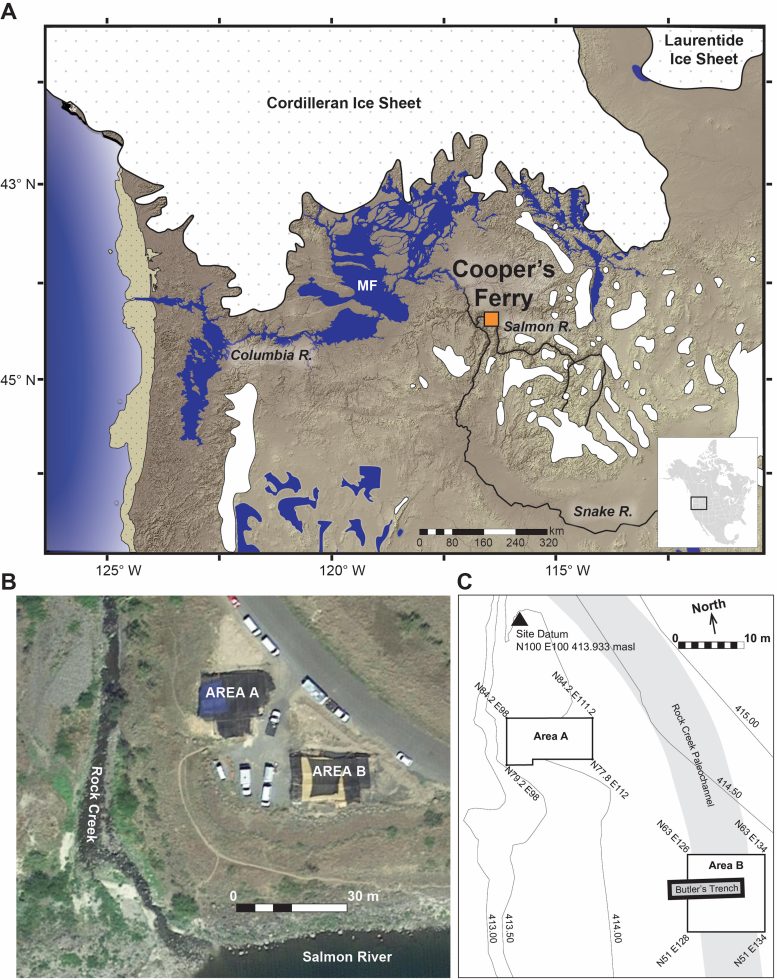
(A) map showing the location of the Cooper’s Ferry site in the context of Pacific Northwest environments at 16,000 years ago; (B) aerial image (from Google Earth) showing the Cooper’s Ferry excavations; (C) site map showing the locations of excavation Area A and Area B. Credit: Courtesy Loren Davis
“There’s an assumption that early projectile points had to be big to kill large game; however, smaller projectile points mounted on darts will penetrate deeply and cause tremendous internal damage,” he said. “You can hunt any animal we know about with weapons like these.”
These discoveries add to the emerging picture of early human life in the Pacific Northwest, Davis said. “Finding a site where people made pits and stored complete and broken projectile points nearly 16,000 years ago gives us valuable details about the lives of our region’s earliest inhabitants.”
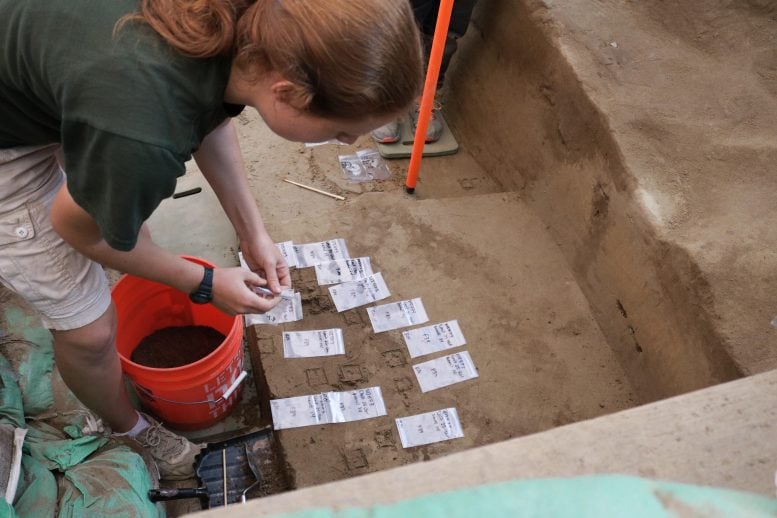
Excavator at work recording artifacts excavated from a pit feature at the Cooper’s Ferry site. Credit: Courtesy Loren Davis
The newly discovered pits are part of the larger Cooper’s Ferry record, where Davis and colleagues have previously reported a 14,200-year-old fire pit and a food-processing area containing the remains of an extinct horse. All told, they found and mapped more than 65,000 items, recording their locations to the millimeter for precise documentation.
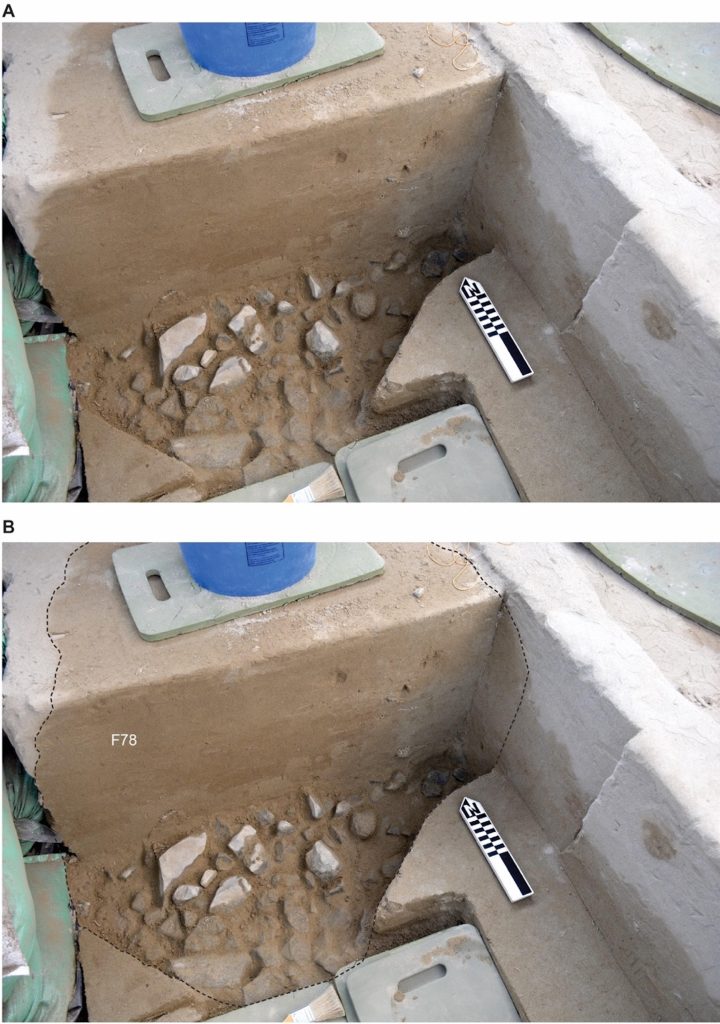
Overview of pit feature 78 during the process of excavation. Credit: Courtesy Loren Davis
The projectile points were uncovered over multiple summers between 2012 and 2017, with work supported by a funding partnership held between OSU and the U.S. Bureau of Land Management (BLM). All excavation work has been completed and the site is now covered. The BLM installed interpretive panels and a kiosk at the site to describe the work.
Reference: “Dating of a large tool assemblage at the Cooper’s Ferry site (Idaho, USA) to ~15,785 cal yr B.P. extends the age of stemmed points in the Americas” by Loren G. Davis, David B. Madsen, David A. Sisson, Lorena Becerra-Valdivia, Thomas Higham, Daniel Stueber, Daniel W. Bean, Alexander J. Nyers, Amanda Carroll, Christina Ryder, Matt Sponheimer, Masami Izuho, Fumie Iizuka, Guoqiang Li, Clinton W. Epps and F. Kirk Halford, 23 December 2022, Science Advances.
DOI: 10.1126/sciadv.ade1248
Davis has been studying the Cooper’s Ferry site since the 1990s when he was an archaeologist with the BLM. Now, he partners with the BLM to bring undergraduate and graduate students from OSU to work the site in the summer. The team also works closely with the Nez Perce tribe to provide field opportunities for tribal youth and to communicate all findings.
The study was funded by the U.S. Bureau of Land Management, the Bernice Peltier Huber Charitable Trust, the Keystone Archaeological Research Fund, the National Geographic Society, and Oregon State University.




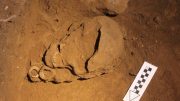




This article shows a picture of stone projectiles and states that this discovery sheds light on human use of stone tools, but then proceeds to say that these points were carbon-dated. Carbon-dating depends on respiration, and obviously stones do not respirate! So I checked the paper and found that it was actually bone fragments that were carbon-dated, not stone points. I think that’s kind of an important point (har har, get it? Point?)
I have found some rocks that are very different and I believe to hat they have some history behind them ? One is a foot shaped rock that looks to be man made and went to possible statue of some sort? The other is a snake head and I believe that it was also something to something bigger. If your interested in checking these out please get in touch asap. I live in outskirts of Roanoke Virginia.
Any connection with the Jamon culture has been debunked by all lines of evidence. There is no genetic relationship by Ydna, Mtdna and autosomal dna
There are only so many ways shape projectile points and that is no evidence of a connection. European scientists are always trying to force diffusionism on anything Native American and trying to find ties to Asia or Europe with Clovis points and now this. The Native Americans have said they were created in the America’s and so are their languages , genetics, and cultural identity.
I call BS on this articles claim that it is the oldest. They definitely have never heard of the page lands in site in florida. Or salutian points found off virginia. The the claims are rubbish
Humans have walked the Americas well over 200,000 years. There’s no such thing as “natives” either. Humanity has walked the earth over a million years and one would assume that also includes the Americas but that’s as far back as can be proven even though some of the “modern” lot of pseudoscience geezers who still cling to completely goofy, asinine outdated ideals…
… like evolution. Genetics has completely disproven that possibility and the fact things usually don’t last and go extinct constantly since time immemorial. Genetics proves that nothing possesses the advanced info or can make that info because of external influence like some weather change. It’s the opposite infact, it kills most species because drastic climate change every several thousand years is a constant.
My point to all this is humanity has been around a long time. Show us more from hundreds of thousands of years and we’ll be impressed. It’s out there, it’s been found. Keep that up because humanity is coming to the end of it’s age as we know it. We’re either in for a total wipeout or the “Great Reset” our overlords are l have been planning and executing 120 in the Elitist Globalist realms. The evil ones you know, who are currently polluting, poisoning, lying, starving, murdering everyone and thing they deem unfit on the planet for their transhumanist society.
We’re in desperate need of a lot and have the ability to fix this, we’re just going to have to do away with these sociopaths.